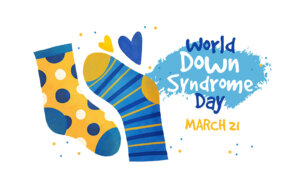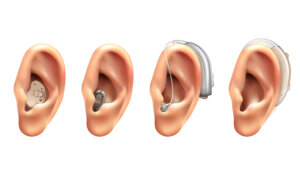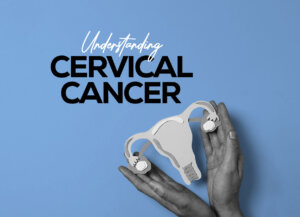The theme for 2022 world autism awareness day (WAAD) is “Inclusive Quality Education for All”. This theme is basically linked with the last year’s observation of this day WAAD “Inclusion in the Workplace”. Before we go deeper, there is the question of;
What is Autism?
Autism spectrum disorder (ASD) aka Autism is a broad term used to describe a group of neurodevelopmental disorders. It is a pervasive, complex, and lifelong developmental disability that appears in early childhood and can impact a person’s social behaviour (e.g communication, language, relationships, and self-regulation), and all aspects of a child’s mental, behavioural, and physical development.
Data according to WHO & CDC USA
According to WHO 2021’s data, it was estimated that about 1 in 160 children has an autism spectrum disorder (ASD) worldwide. This estimate represents an average figure, and reported prevalence varies substantially across studies.
CDC USA 2016 statistics revealed that ASD is 4 times more prevalent in boys than it is in girls; this is because girls often go undiagnosed and don’t fit autism stereotypes, they mask symptoms better than boys do. ASD is found in individuals around the world, regardless of race, culture, or economic background.
This year’s theme emphasized that people with autism spectrum also have the right to achieve quality education like normal people. The stakeholders must create a quality educational environment for these people, as modern education can help them stand shoulder to shoulder with other people.
TYPES OF AUTISM SPECTRUM DISORDERS
There are three types of autism spectrum disorders according to the Applied Behaviour Analysis Programs Guide:
- AUTISTIC DISORDER
This is sometimes called “classic” autism. It is what most people think of when hearing the word “autism”. People with autistic disorder usually have significant language delays, social and communication challenges, and unusual behaviors and interests. Many people with autistic disorder also have intellectual disabilities.
- ASPERGER SYNDROME
People with Asperger syndrome usually have milder symptoms of autistic disorder. They might have social challenges and unusual behaviors and interests. However, they typically do not have problems with language or intellectual disability.
- PERVASIVE DEVELOPMENTAL DISORDER
This is sometimes called “atypical autism,” or PDD-NOS. People who meet some of the criteria for autistic disorder or Asperger syndrome, but not all, maybe diagnosed with atypical autism. These people usually have fewer and milder symptoms than those with autistic disorder. The symptoms might cause only social and communication challenges.
CAUSES OF AUTISM DISORDER
The National Library of Medicine 2018 journal states that the exact cause of ASD is unknown. The most current research demonstrates that there’s no single cause.
Some of the suspected risk factors for autism include:
- Having an immediate family member with autism
- Genetic mutations
- Fragile x syndrome and other genetic disorders
- Being born to older parents
- Low birth weight
- Metabolic imbalances
- Exposure to heavy metals and environmental toxins during pregnancy
- A history of viral infections
- Fetal exposure to the medications valproic acid (Depakene) or thalidomide (Thalomid)
SIGNS AND SYMPTOMS OF AUTISM DISORDER
Parents often notice signs during the first three years of their child’s life. These signs often develop gradually, though some autistic children experience worsening in their communication and social skills after reaching developmental milestones at a normal pace. The CDC USA 2021 states the symptoms below in an article.
- Abnormal Body Posturing or Facial Expressions
- Abnormal Tone of Voice
- Avoidance of Eye Contact or Poor Eye Contact
- Behavioural Disturbances
- Deficits in Language Comprehension
- Delay in Learning to Speak
- Flat or Monotonous Speech
- Inappropriate Social Interaction
- Intense Focus on One Topic
- Learning Disability or Difficulty
- Not Engaging in Play with Peers
- Preoccupation with Specific Topics
- Problems with Two-Way Conversation
- Repeating Words or Phrases
- Repetitive Movements
- Sleep Disturbances
- Social Withdrawal
HOW IS AUTISM DIAGNOSED?
The National Center on Birth Defects and Developmental Disability 2022 explains that diagnosis is typically made by a team of specialists. This team may include child psychologists, occupational therapists, or speech and language pathologists.
Diagnosis is based on behavior, not cause or mechanism.
- The Modified Checklist for Autism in Toddlers (M-CHAT) is a common screening tool used by many pediatric offices. This 23-question survey is filled out by parents. Pediatricians can then use the responses provided to identify children that may be at risk of having ASD.
Other screenings and tests
A combination of tests for autism may be combined, including:
- DNA testing for genetic diseases
- behavioral evaluation
- visual and audio tests to rule out any issues with vision and hearing that are not related to autism.
- occupational therapy screening
- developmental questionnaires, such as the Autism Diagnostic Observation Schedule (ADOS)
HOW IS AUTISM TREATED?
There is no “cure” for autism, but therapies and other treatment considerations can help people feel better or alleviate their symptoms as stated by the US National Institute of Health 2021.
Many treatment approaches involve therapies such as:
- Behavioural therapy
- Play therapy.
- Occupational therapy
- Physical therapy
- Speech therapy
- Cognitive therapy
- Early intervention.
- Educational and school-based therapies.
- Joint attention therapy.
- Medication treatment.
- Nutritional therapy.
Some people on the spectrum may respond well to certain approaches, while others may not.
CONCLUSION
It is important to know that autism is a complex neurodevelopmental condition that can affect how a person reacts to and relates to the world around them. Early diagnosis can make a huge difference in the lives of children with ASD and their families.
The impact of autism varies widely among individuals. Some autistic people live independently, while others need lifelong care and support. People with autism often have co-occurring conditions, including epilepsy, depression, anxiety, and attention deficit hyperactivity disorder as well as challenging behaviours such as difficulty sleeping and self-injury. The level of intellectual functioning among people with autism varies widely, extending from profound impairment to superior levels.
Autism often has an impact on education and employment opportunities, and the demands on families providing care and support can be significant. Societal attitudes and the level of support provided by local and national authorities are important factors determining the quality of life of people with autism.










